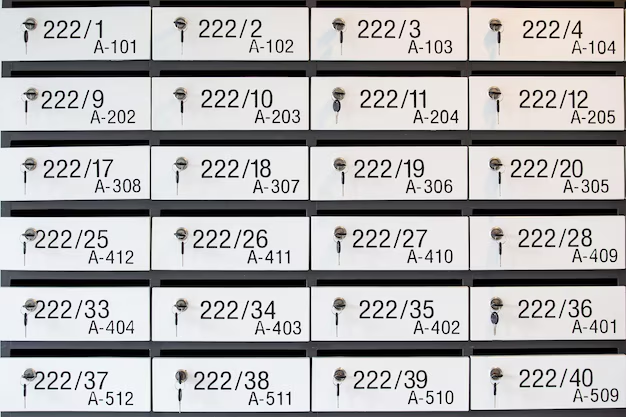Writing an Apartment Address Clearly and Correctly
Navigating the nuances of addressing an apartment might seem trivial, yet mistakes can lead to confusion and mail delivery issues. Whether you're filling out an online form or writing a mailing label, getting the format right is crucial. Let's explore the best way to ensure your apartment address is spot-on.
How to Format Your Apartment Address
When addressing an apartment, clarity and precision are key. Here's the step-by-step format you should follow to ensure your mail reaches the correct destination:
Recipient's Name: Start with the full name of the recipient. This is typically placed on the first line.
- Example: John Doe
Street Address and Apartment Number: The next line should include the street address followed by the apartment or unit number. Be sure to use proper abbreviations:
- “Apt” or “Unit” for apartment numbers
- Example: 123 Main St Apt 4B
City, State, and ZIP Code: Finally, complete the address with the city, state’s two-letter abbreviation, and the five-digit ZIP code.
- Example: Springfield, IL 62704
Tip: If using online forms, sometimes the apartment number field appears separately from the street address. Always double-check that the apartment number is included wherever specified to avoid delivery errors.
Common Mistakes to Avoid
- Skipping the Apartment Number: Insufficient attention to the apartment or unit number leads to undelivered mail.
- Improper Abbreviations: Avoid using abbreviations that aren't standard, such as "Appt" for "Apt".
- Mismatched City/ZIP Code: Always ensure the city matches the ZIP code; postal services rely heavily on ZIP codes for sorting.
Understanding how to properly format your apartment address not only prevents mail mishaps but also enhances your communication's professionalism. This skill is particularly vital if you're engaging with landlords, government bodies, or banks.
Transitioning to Financial Preparedness
With the basics of addressing out of the way, it's time to delve into broader subjects that might affect you as an apartment dweller, such as financial assistance opportunities. Living in an apartment might mean navigating rental payments, often a significant chunk of monthly finances. If budgeting becomes tight, several programs and tools can alleviate some financial stress.
Here are some financial resources that could be beneficial:
- Rental Assistance Programs: Designed to provide temporary relief to tenants struggling to meet rental obligations. Check if local or federal programs can offer aid.
- Government Aid Programs: These can include subsidies or grants aimed at housing, potentially lowering living costs.
- Credit Card Solutions: Many credit card providers offer financial management tools that help organize bills and potentially extend credit during emergencies.
- Educational Grants: If you're a student, paying attention to grants for living expenses can indirectly lessen the need for other financial measures.
- Debt Relief Options: For those burdened by personal debt, considering debt consolidation or counseling services might be proactive strategies.
Quick Reference: Financial Resources for Apartment Dwellers
- 📦 Rental Assistance - Check local housing authorities for available programs.
- 🏛 Government Subsidies - Explore federal aid such as HUD for eligible housing support.
- 💳 Credit Management - Utilize tools in credit tracking apps to monitor expenses.
- 🎓 Student Grants - Use educational institutions' resources for living allowances.
- 🧾 Debt Counseling - Seek professional advice for managing outstanding bills and obligations.
Adapting to apartment life involves more than just understanding how to write an address; it requires strategic financial decision-making. By tapping into available resources, you can ensure that your financial health stays as secure and organized as your mail delivery.
